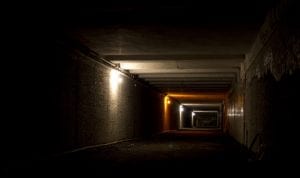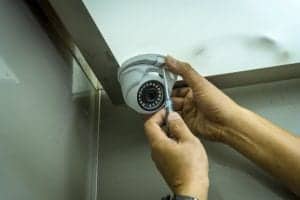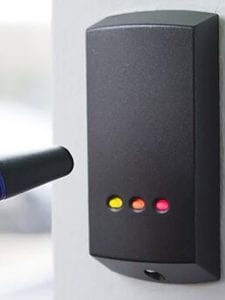
CCTV cameras are one of the most efficient tools in preventing crime and, when at least partially possible, in alleviating its effects. But in order for CCTV cameras to be efficient, they need to work properly. If you stroll through London and look closely, you will notice a lot of cameras. They may make you feel safe. But how many of them are truly capable of providing you with security?
Deploying CCTV is not only about where the camera is placed but also about how it is placed there, how it is connected to the rest of your company’s security and data systems, how the pictures are archived, and who has access to them.
In other words, your CCTV system needs to be seamlessly integrated with your other systems. They need to work together as a well-oiled machine in order for you to get the best possible results.
Not only do these elements make the difference between footage that can catch a criminal and footage that shows nothing useful, but many of them constitute legal requirements that fall into your responsibility.
Faulty CCTV deployment can incur huge costs in fines and damages suits. If not done properly, you may not use the footage as evidence when you need it the most. Last, but not least, what good is a CCTV system if it’s not thief-proof? A proper setup ensures that your system is not easy to tamper with and render it useless.
In our twenty years of experience we have come across – and learned from – many CCTV deployment mistakes. In today’s post, we are going to talk about the most dangerous ones – the basis of the most important lessons we have learned.
Ignoring environmental factors in monitored areas is the most common mistake made in CCTV deployment. The most intuitive example is ambient light level: insufficient or radically unequal lighting can result in undecipherable footage.
Other factors that you need to consider are:
Environmental factors should play a role when planning deployment and selecting equipment. Even indoors equipment is susceptible to bad lighting conditions or electrical interference, so you should not ignore these concerns simply because your company’s offices are in an air-conditioned, exemplary clean glass London building.
This is why at ACCL we never treat CCTV deployment in London as a standard service. We carefully factor in environmental conditions before making any decisions or drilling any holes.

Most CCTV users are primarily concerned with what they are monitoring, so they focus primarily on the cameras.
No pun intended – but this is not the complete picture.
If live monitoring is required, the operators have to work from a secure room, where access is strictly controlled and logged. This room needs to have an adequate size and lighting, and – since the equipment usually generates a lot of heat – adequate ventilation and temperature control. In fact, some businesses opt to do the live monitoring off-premises.
Even if live monitoring is not accessed, the recorded pictures need to be stored and archived in a secure location, as businesses are legally responsible for the security of their CCTV footage.
Make sure that your storage room is not affected by humidity and that it’s perfectly safe from extreme weather conditions.
Infrastructure convergence is no longer something that security professionals are debating. Even large enterprises, where physical security and IT have been separate functions virtually throughout the history of IT, are no longer talking about whether it makes sense to treat them together, but about how they can optimise this convergence.
Maintaining a separate network for CCTV equipment, set up separately from the rest of the office network, with separate maintenance procedures and servicing contracts is a significant management and financial burden. It reduces the flexibility of your security systems, while needlessly increasing infrastructure costs. Networking service providers have long recognised this tendency and have begun to offer integrated network design and cabling services.
At ACCL, we’ve been advising our clients to tackle these matters together for years. In fact, we also offer advantageous package deals to help London businesses keep their network safe and future-proof.

Although physical security and IT are no longer separate functions, they do have specific – and separate – requirements. CCTV cameras have special requirements that range from legal restrictions to specific provisions regarding power supply and data cabling.
Most indoors CCTV cameras today use Cat-5/6 cables for their data connections, just like desktop computers. Higher-speed cameras, or cameras used for outdoors deployment tend to use fibre optic cables, which can carry sensitive data at higher speeds and over longer distances. Due to their convenience, wireless cameras are becoming increasingly popular – but even these require power cabling (albeit, if the electrical installation is adequate, over much shorter distances).
However, each type of cable only works over a certain range of distances and has a special connection and interoperation requirements – for example, you cannot plug an optical SFP or OFP connector to your office router.
Mistakes made when choosing equipment tend to be costly to repair – and mistakes made while installing the cabling tend to be difficult to troubleshoot.
This is why you should always work with professionals for all your data cabling and CCTV deployment needs. It may look cheaper to have a friend who “knows cabling and is techy” complete the works for you. But in the long run, it will definitely cost you a lot more to fix mistakes made by rookies.
Good quality CCTV cameras are designed to be sturdy and reliable. If they are properly installed, most cameras end up being replaced due to growing customer demands or technical obsolescence, not because they break.
However, like all security equipment, CCTV cameras do need regular inspection and maintenance. It can be tempting to place cameras in inaccessible locations and permanently seal cables into their enclosures. Indeed, no one will be able to tamper with the cable or the camera – but changing a damaged cable or replacing the camera will be equally difficult.
It is crucial to think about your long-term investment here. Make sure that easy access to cables is granted and that the maintenance and repair teams can intervene quickly when there is a problem to be solved.

Not the following legislation is the single most disastrous mistake you can make when it comes to CCTV cameras. Being recorded at work or in a public place is a problem that everyone takes seriously. Leaking or misusing recorded information can have disastrous consequences for the persons recorded, even when they are not caught doing anything illegal.
This is why the UK has very strict legislation related to what you can record and under what conditions. The fundamental act which governs how you are allowed to use information from CCTV cameras is the Data Protection Act (DPA) In short, according to the Data Protection Act, if you are using CCTV cameras on your London commercial property, you must:
The DPO itself is augmented by a number of other regulatory documents, primarily the Freedom of Information Act (FOIA) and the Protection of Freedoms Act (POFA). These requirements are outlined in the Surveillance Camera Code of Practice, issued under the POFA. The ICO’s handy code of practice also includes a useful, more down-to-earth overview of your responsibilities.
The legislation in this field is very murky and probably best left to experts in matters of law. However, you should at least be aware of its scope, and you should ensure that any third-party you work with is aware of it as well.

Most CCTV footage is not used immediately after being recorded. At a minimum, many burglary attempts against commercial properties take place during the night, so it can be hours before someone retrieves the recording. In other cases, it may take days or even weeks before someone notices something wrong and decides to look at CCTV footage, or before an official request from the authorities is delivered.
Consequently, CCTV footage needs to be properly archived. The basic guideline is that your system should be able to store 31 days of good quality pictures; there is rarely any reason to reduce this period, but for some businesses, it can make sense to extend it.
Good storage practices are not just about storage capacity though. You also need to keep in mind that:
Fortunately, the Home Office issues a leaflet with 19 simple guidelines to follow in order to ensure the quality and safe storage of your CCTV footage.
Does your storage meet these guidelines?

The installation of CCTV systems is often time and resource-constrained. Many operators are content to just turn everything on and make sure that every camera seems to be recording and producing footage.
This can be sufficient for simple , which only have one or two security cameras pointed at the doors. But for more complex projects, this level of validation is dangerous.
Have you ever noticed how “alien” CCTV footage seems – how everything looks warped, how the surroundings look remarkably static and narrow, and how various features are unexpectedly blurry, even though others are crystal-clear?
That is because CCTV cameras have optic parameters that are quite different from those of the human eye. Unfortunately, that makes it hard to verify parameters like coverage and image detail just by looking at a screen for ten seconds.
The Home Office’s CCTV operations manual instead recommends that a set of vital parameters be verified according to a documented test procedure, based on design specifications. These parameters cover features such as:
Does all this seem too complex? We’re not going to lie – it can be. Especially if you want to make sure you the CCTV system monitoring your London office building is always functioning properly and is not easy to tamper with.
It may be tempting to purchase the cheapest cameras on the market and have your “tech guy” install them, but this will in no way guarantee your safety.
Here at ACCL we have more than 20 years of experience in flawless CCTV deployment in London and the surrounding areas. We can make sure that you will get the most out of your system with minimal investment. Plus, we always ensure that your CCTV system is sturdy and future-proof.
Want to know more about how we can help you with access control or a new CCTV system? Get in touch with us and claim your FREE, no-obligation survey!
services mentioned in this post: CCTV, Access Control
Related to post: Avigilon CCTV CCTV employee rights